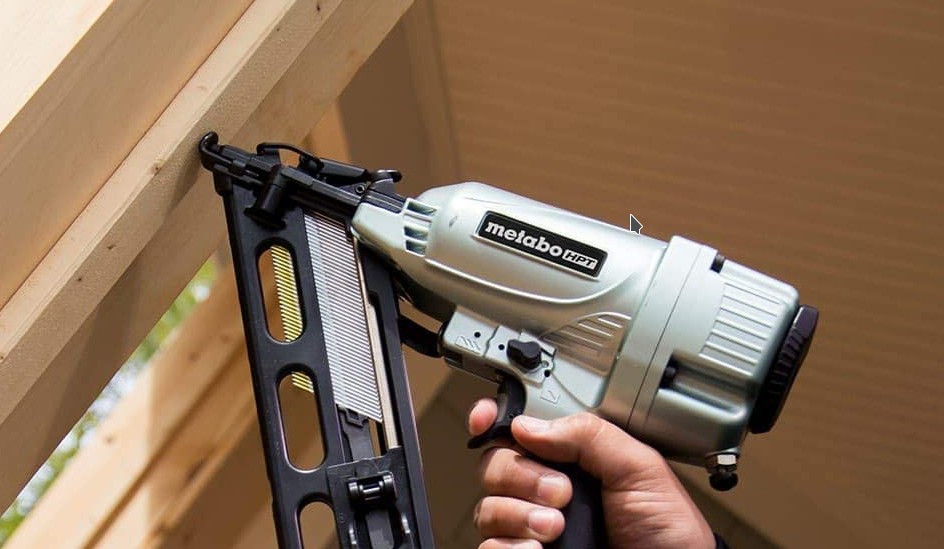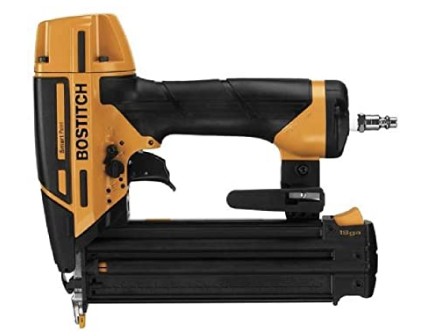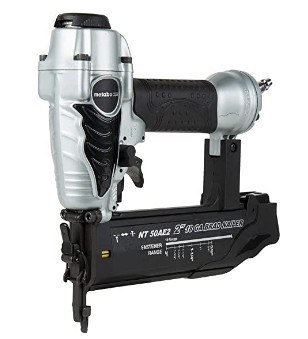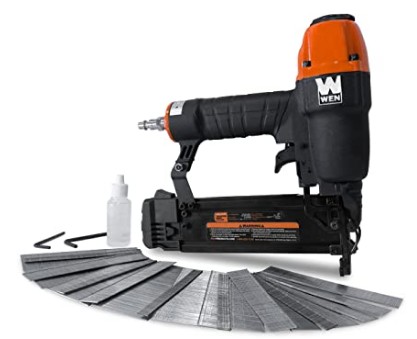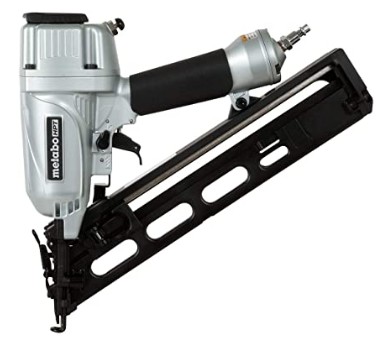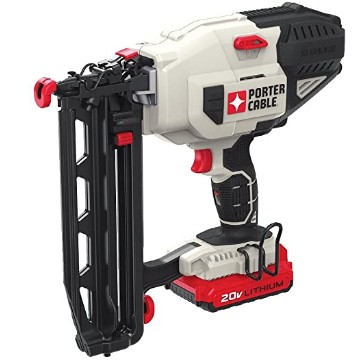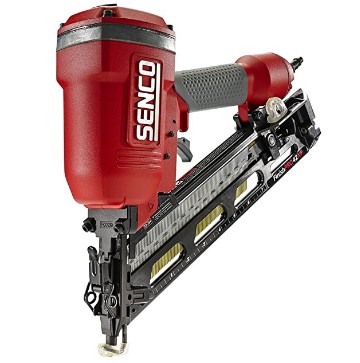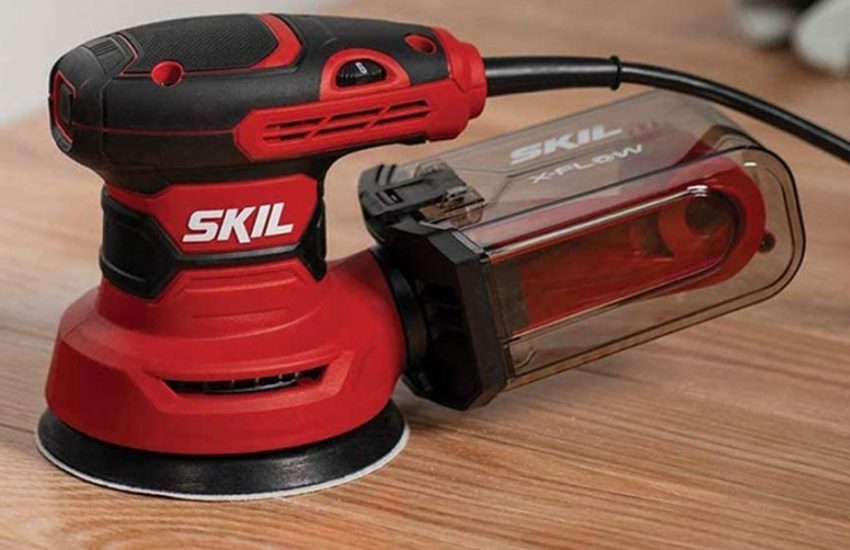What is the Difference Between a Brad Nailer and a Finish Nailer?
Physically, brad nailers and finish nailers are very alike. They are accurate nailers designed for proper nailing as compared to bulk nailing. For instance, finish nailers, as the name indicates, help at the end of projects and not throughout the work. But they have different uses and roles. Let’s find the differences between the two types of nailers.
What is Brad Nailer?
A brad gun looks and operates like a nail gun, but it shoots brads, which are thin nails. Brads apply when you are doing light finishing—the tool aids when molding or trimming woodwork. Brad nailers are slimmer with a smaller head compared to the standard finish nailers.
Pros
- Perfect for attaching delicate trims or moldings
- The 18-gauge nail usually doesn’t split the trim.
- The hole that results is tiny and doesn’t require any filling.
- Used on smaller baseboards and plywoods
- One can use one hand to hold the material securely and nail it instantly.
Cons
- Not an ideal tool for nailing in corners and tight spaces
- Not strong enough to hold heavier and thicker materials
What is a Finish Nailer?
A finish nailer is a nail gun outlined for fixing finishing materials, like trim and crown molding, with finish nails. The tool uses headless pins; thus, there is a small hole made that doesn’t require filling. Most finish nailers can handle nails that range in length from 1 to 2.5 inches long. A finish nailer suits best in most-structural projects that include the following;
- Fixing baseboard, crown molding, chair rails, and other types of woodwork
- Making cabinets
- Installing door and window casing
- Building staircases
- Installing hardwood floors
- Making furniture and other woodworking joinery
Pros
- Has the ability to set the depth of nails shotting
- Headless nails leave small nail holes that require less filling and sanding.
- Finish nails are thicker nails than brad nails, thus best for a more permanent form of joinery.
- The tool is versatile for use in many materials and surfaces.
Cons
- Not best with thin, delicate trim and materials
- Holes are small but will still need filling.
Differences Between a Brad Nailer and a Finish Nailer
Both create different-sized holes on wood when in use. The holes made by a finish gun mostly needs you to fill them. Brad guns generally don’t leave detectable holes in the material. If the surface is especially weak or thin, it leaves holes, though you only require a little bit of putty to fill them.
In terms of the nails used, a brad nailer shoots 18-gauge nails, whereas the finish nail guns are either for 16-gauge or 15-gauge pins. For better understanding, the higher the gauge of the nails, the smaller the diameter. That’s why we say the finish nailer shoots thick nails than brad because they have less gauge, thus larger diameter.
Another difference is power; finish nailers are more potent of the two kinds of nailers. For instance, if you have some heavy and thick trim working on, using a brad nailer makes you risk having an insecure border.
If you use a brad gun in the wrong function, the trim or molding will eventually fall away from the wall. A finish nailer is perfect for doing powerful work. On the contrary, if you drive nails into thinner trim, then the finish nailer’s power becomes a hindrance.
In their applications, brad nailer won’t cause any cracks or split into thin pieces, unlike the finish. Thus, the carpenters prefer using brad on corners to avoid damage.
Which One Should You Choose?
Use each tool for the appropriate task and according to their capability. If doing the trims, brad nail is an excellent choice for lightweight surfaces and molds. For permanent joinery, use finish nailers to attach heavy baseboards, cabinets, and crown molding.
What is the Best Brad Nailer?
This list presents some of the best brad nailers that will ensure you achieve great results for your trim, molding, or cabinet projects.
BOSTITCH (BTFP12233) Brad Nailer
It is among the most versatile pneumatic nailers that use an air compressor in the market. The oil-free design allows for long-term, low-maintenance use and drives 18 GA brad nails from 5/8-inch to 2-1/8 inches in depth. The tool comes with a 1/4-inch air fitting, belt hook with an integrated pencil sharpener, a carrying case, and extra No-Mar Tips.
Features
- Accurate nailing with smart technology
- Oil-free operation
- Depth of drive engagement
- Firing mode
- A free jam release mechanism
- rear air exhaust
- No-Mar tips
Pros
- Lightweight magnesium design
- No regular maintenance required
- Low nail lockout prevents dry firing
- Trigger locking mechanism when not in use
- Swivel air fitting
Cons
- Straight magazine design is challenging to use in tight spaces.
- Nail jams will often happen.
- To check how many nails are left, you need to open the magazine.
Metabo HPT NT5OAE2 Brad Nailer
Metabo offers some of the best powerful tools you can find. They provide an excellent balance of affordability and quality with this brad nailer. This device is compatible with 18-inch brad nails, and it’s light thus easy to operate.
Features
- 5/8 up to 2 inch 18-gauge nails
- lightweight with 2.2 lbs.
- No-MAR Tip
- A 360-degree adjustable exhaust port
Pros
- Excellent design quality
- Non-marring tip
- Works with 18-gauge brad nails
- A 360-degree adjustable exhaust port
- 2-inch drive depth
Cons
- It’s a bit expensive
Wen 6172 Nailer
It‘s an excellent grade pneumatic brad nailer that comes at an affordable price. The tool is standard, lightweight due to the cast-aluminum body with an anti-slip rubber grip. It can effortlessly fire brad nails ranging from 3/4 inch to 2-inch in length. The nailer needs 60 – 115 PSI operating pressure with 1/4 inlet NPT intel fitting to make the device functional. Again, the air consumption per nail is 0.028 CFM @ 88 PSI.
Features
- Adjustable depth of drive
- Easy loading and quick jam release
- Directional exhaust
- Fastener length: 3/4 inch to 2-inch
- Operating pressure 60-115 PSI
- Integrated rubber grip
Pros
- Easy to use
- Lightweight and compact
- An easy jam release mechanism
- Effortless loading/reloading
- Adjustable depth-of-drive feature
Cons
- Not compatible with slightly longer nails other than the measurements specified
Best Finish Nailer
A finish nailer can be an excellent tool for basic carpentry projects at your home or commercial usage.
Metabo HPT 15-Gauge Nailer
The device comes with a 5-year warranty. You get this along with a 15-gauge finish nailer that supports a nail length ranging from 1 ¼ inch to 2 ½ inches. Another best thing about this finish nailer is getting a bag of integrated air dust for cleaning the dirt. Again, get a selective actuation switch and a 360-degree exhaust portal, all of which can be quite handy.
Features
- 14-gauge finish nailer
- One ¼ inch to 2 ½ inch nail length
- 5-year warranty
- Integrated air duster
- Selective actuation switch
- 360-degree exhaust portal
- Highly reliable
Pros
- compact and lightweight aluminum body
- Angled magazine for quick access in tight corners
- Integrated air duster for faster and cleaner job completion
- Clear nose for precise nailing and natural jam clearing
- Easy-to-dial tool-free depth adjustment
- Easy rear-loading magazine
- Selective Actuation switch
- Adjustable exhaust portal
Cons
- Dry-fire lockout system
- Lacks belt hook
Porter-Cable (PCC792LA) Finish Nailer
The tool comes with a nail length support of 1 inch to 2 ½ inches in this pretty perfect finish nailer. Also, this finish nailer comes with a 3-year warranty and a worth price. Porter is robust and comes with a 20-volt battery to power the 16-gauge finish nailers for a long time without any issues.
Features
- 16-gauge finish nailer
- 1 inch to 2 ½ inch nail length
- 3-year warranty
- Uses 20-volt batteries
- Magazine capacity of 100 nails
- Inbuilt dual LED lights
- Lightweight construction
Pros
- Multiple tools free settings
- Provides improved productivity and user safety
- Provides consistent firing power
- 100% battery power
- Great for-dollar value
Cons
- Quite heavy and bulky
- Straight-head construction
Senco 4G0001N
The nailer has an operating pressure between 70 -120 PSI, thus one of the most potent pneumatic nailers you can purchase. It can drive 15-gauge finish nails up to 2.5 inches long into hardwoods. With a large-capacity 104-nail magazine, you don’t have to bother with reloading frequently. Despite its heavy-duty construction, this nailer weighs just 4 pounds. This lightweight, combined with its ergonomic grip, makes you enjoy your work. This pneumatic nailer needs an air compressor and air hose to operate.
Features
- Thumbwheel depth-of-drive
- Stretch comfort grip
- Two no-mar cushions with onboard storage to protect work surfaces
- Never-lube design means an oil-less operation
- The lightweight feature makes it comfortable to use all-day
- EZ-Clear latch provides fast and easy clearing of occasional jams
- 360 degrees adjustable exhaust
- Construction ruler for fast measurements
Pros
- It’s lightweight
- You can adjust the air so nailing, preventing the air from hitting you in the face.
- The case on this is very user friendly.
Cons
- It has a bulkhead
Conclusion
I am sure by now, after going through the article, you fully understand the difference between brad and finish nailer. For more robust joinery, consider using the finish nailer, but the brad is the perfect device for joining thin materials.
